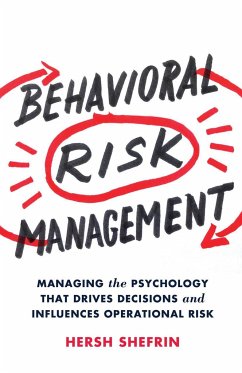The psychological dimension of managing risk is of crucial importance, and its study has led to the identification of specific do's and don'ts. Those with an understanding of the psychology underlying risk and the skills to recognize its manifestation in practice, have the opportunity to develop frameworks that embody the do's and don'ts, thereby producing sound judgments and good decisions. Those lacking the understanding and the skills are destined to be more hit and miss in their approach to risk management, doing the don'ts and not doing the do's. Virtually every major risk management catastrophe in the last fifteen years has psychological pitfalls at its root. The list of catastrophes includes the 2008 bankruptcy of Lehman Brothers and subsequent global financial crisis, the 2010 explosion at BP's Macondo well in the Gulf of Mexico and the 2011 nuclear meltdown at the Fukushima Daiichi power plant.
A critical lesson from psychological studies for those involved in risk management is that people's judgments and decisions about risk vary with type of circumstance. In Behavioral Risk Management readers will learn that there are specific actions that organizations can undertake to incorporate understanding, recognition, and behavioral interventions into the practice of risk management. There are many examples throughout the book that illustrate doing the don'ts. The chapters in the first part of the book introduce the main ideas, and the chapters in the latter part provide insight into how to apply those ideas to the practical world in which risk managers operate.
A critical lesson from psychological studies for those involved in risk management is that people's judgments and decisions about risk vary with type of circumstance. In Behavioral Risk Management readers will learn that there are specific actions that organizations can undertake to incorporate understanding, recognition, and behavioral interventions into the practice of risk management. There are many examples throughout the book that illustrate doing the don'ts. The chapters in the first part of the book introduce the main ideas, and the chapters in the latter part provide insight into how to apply those ideas to the practical world in which risk managers operate.
"Behavioral Risk Management is a thought-provoking book that advances the behavioral finance literature by moving beyond the historical focus on asset pricing to examine operational risk within a number of institutions. The book effectively demonstrates that investment managers need to understand not only the quantitative tools, such as conditional value at risk, but also the psychology of risk management." (Mark K. Bhasin, Financial Analysts Journal, Vol. 12 (1), 2017)








